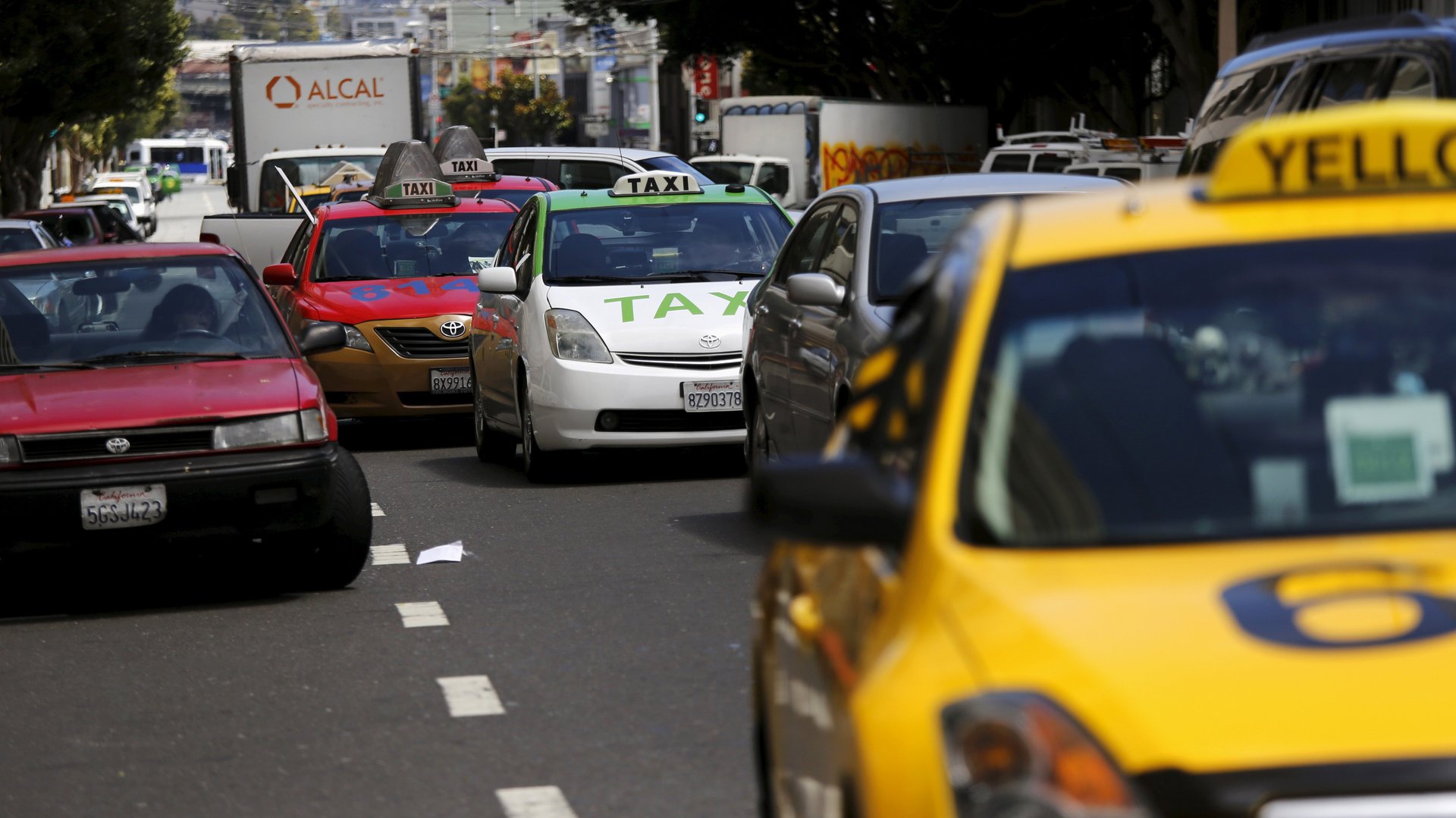The biggest taxi company in Uber’s hometown is on the verge of bankruptcy
In the latest sign that the on-demand economy is taking its toll on traditional businesses, the biggest taxi company in San Francisco is reportedly close to filing for bankruptcy.


In the latest sign that the on-demand economy is taking its toll on traditional businesses, the biggest taxi company in San Francisco is reportedly close to filing for bankruptcy.
Yellow Cab Co-Op is preparing to reorganize under Chapter 11 in the face of mounting debt, a pile of lawsuits, and steep competition from rivals Uber and Lyft, the San Francisco Examiner reported on Jan. 6. The taxi company is “in a midst of serious financial setbacks” due to “business challenges beyond our control” and “of our own making,” Yellow Cab Co-Op president Pamela Martinez wrote in a letter to shareholders dated Dec. 10 and obtained by the Examiner. In the letter, she said the company expected to move forward with the bankruptcy proceedings within a month.
Yellow Cab Co-Op confirmed to Quartz that it is considering filing for bankruptcy after receiving “an unusual number of accident claims” in 2015. A company spokesman said in an email that the cooperative is still averaging 15,000 fares and 20,000 passengers a day in San Francisco. Yellow Cab is made up of more than 300 owners and says it has more taxis than the next four San Francisco operators combined.
“On an annual basis over 5 million passengers are transported in Yellow cabs. We used to have more and our goal is to get them and even more back,” Martinez wrote in the letter obtained by the Examiner. She also noted a need “to have not just more drivers but drivers who are happy to be behind the wheel of a Yellow cab because we offer the best opportunity to make a living in a taxi.”
San Francisco is far from the only city where the yellow cab industry is seriously threatened by ride-hailing services. Taxi drivers have protested Uber from France to Australia. In New York, the yellow cab medallions that once sold for more than $1 million have plunged to closer to $700,000 in value. This past July, 22 taxi companies owned by New York City’s Evgeny Freidman filed for bankruptcy protection, citing an “unparalleled crisis” to medallions.
That said, were Yellow Cab Co-Op to file for bankruptcy, it would appear to be the industry’s largest Uber-related casualty yet in the US—and a grim omen for the rest of it.